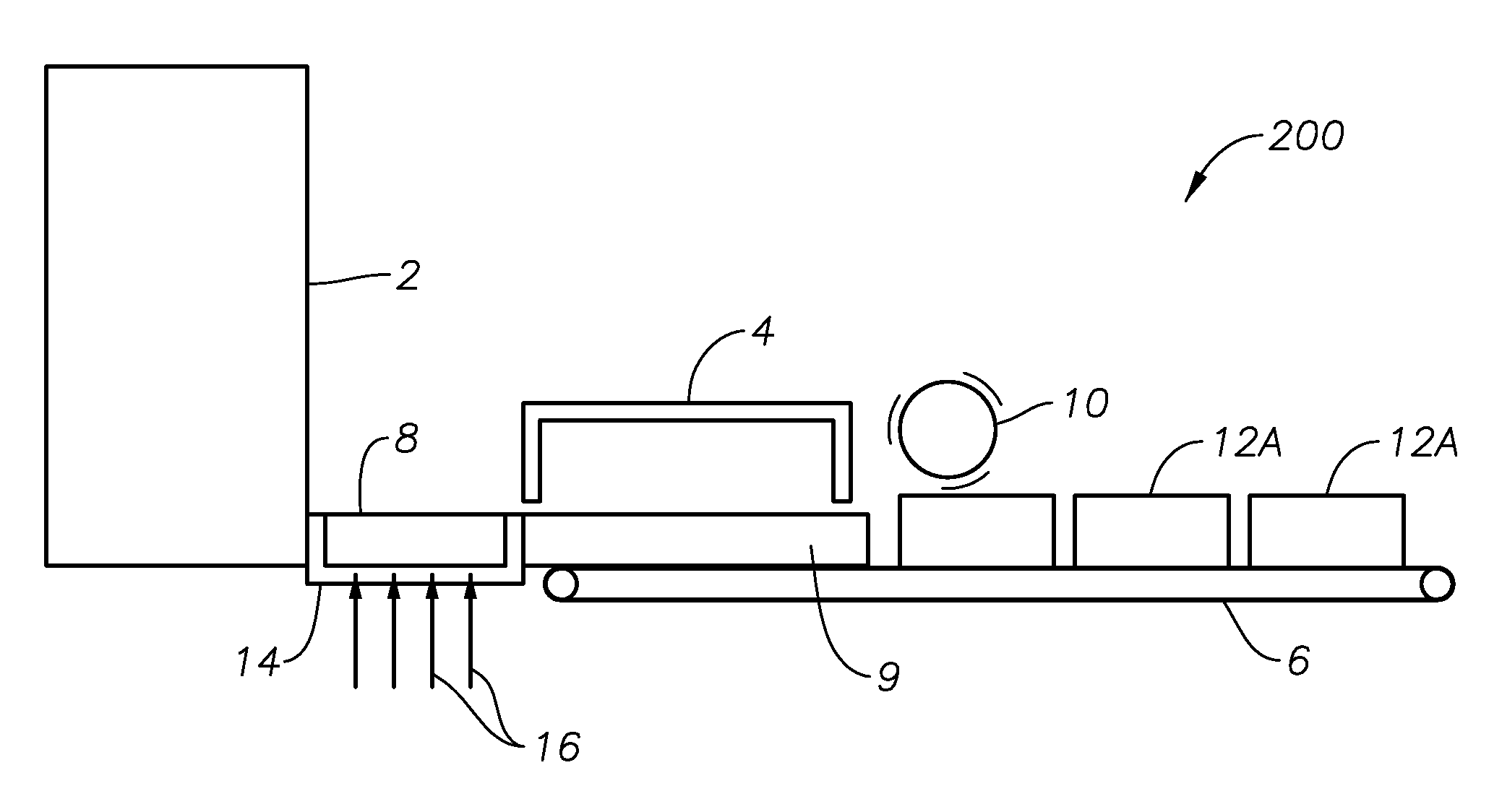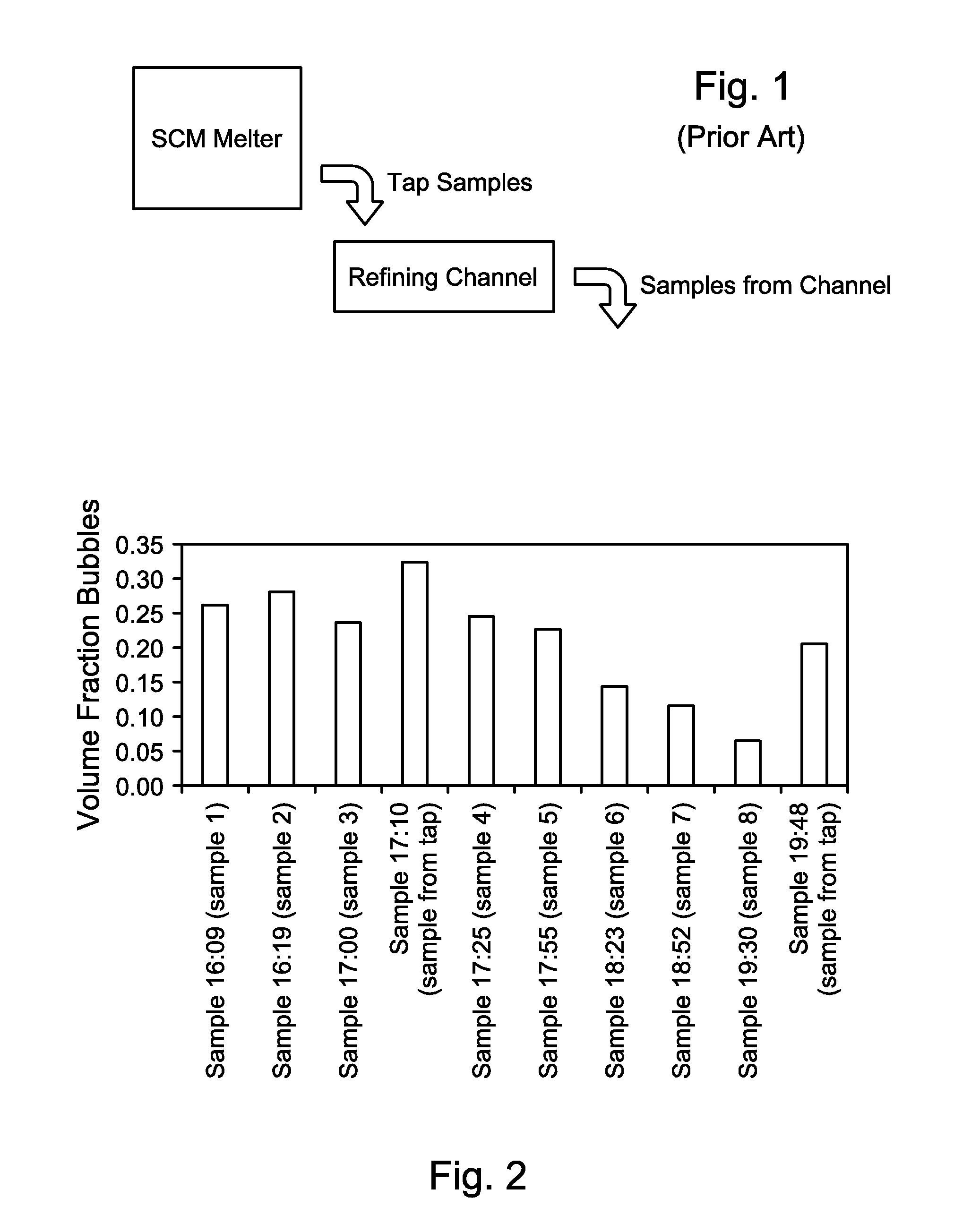Systems and methods for making foamed glass using submerged combustion
a technology of foamed glass and melters, which is applied in the field of combustion furnaces, can solve the problems of insufficient high temperature properties, rapid melting of glass batches, and offensive odors of glass products, and achieve the effect of increasing density and decreasing density
- Summary
- Abstract
- Description
- Claims
- Application Information
AI Technical Summary
Benefits of technology
Problems solved by technology
Method used
Image
Examples
embodiment 100
[0085]Specific non-limiting system and method embodiments in accordance with the present disclosure will now be presented in conjunction with FIGS. 6-12. The same numerals are used for the same or similar features in the various figures. In the views illustrated in FIGS. 6, 7 and 8, it will be understood in each case that the figures are schematic in nature, and certain conventional features are not illustrated in order to illustrate more clearly the key features of each embodiment. FIG. 6 illustrates a schematic side elevation view of a first system embodiment 100 comprising an SCM melter 2, an optional cooling and annealing lehr 4 downstream of melter 2, and a conveyor 6. An initial foamy molten glass 8 is discharged directly from the melter 2 to conveyor 6 in this embodiment. Initial foamy molten glass 8 discharged directly from melter 2 may be characterized as having small bubble diameters as measured and noted in Tables 1 and 2A and B and FIGS. 2-5. This initial foamy glass 8 w...
embodiment 400
[0097]FIGS. 9-12 are logic diagrams of four method embodiments of the present disclosure. FIG. 9 is a logic diagram of method embodiment 400, including the steps of melting glass-forming materials in a submerged combustion melter comprising an outlet, the melter producing an initial foamy molten glass having a density and comprising bubbles filled primarily with combustion product gases (box 402), depositing the initial foamy molten glass from the melter outlet directly onto or into a transport apparatus (box 404), and transporting the initial foamy molten glass to a processing apparatus using the transport apparatus (box 406).
embodiment 500
[0098]FIG. 10 is a logic diagram of method embodiment 500, which is a method of manufacturing foamed glass comprising the steps of melting glass-forming materials in a submerged combustion melter comprising an outlet, the melter producing an initial foamy molten glass having a density and comprising bubbles filled primarily with combustion product gases (box 502), depositing the initial foamy molten glass from the melter outlet directly onto or into a transport apparatus (box 504), and transporting the initial foamy molten glass to a processing apparatus using the transport apparatus, forming a continuous ribbon of molten foamed glass on or in the transport apparatus having varying thickness and varying width (box 506).
PUM
| Property | Measurement | Unit |
|---|---|---|
| diameter | aaaaa | aaaaa |
| diameter | aaaaa | aaaaa |
| thickness | aaaaa | aaaaa |
Abstract
Description
Claims
Application Information
 Login to View More
Login to View More - R&D
- Intellectual Property
- Life Sciences
- Materials
- Tech Scout
- Unparalleled Data Quality
- Higher Quality Content
- 60% Fewer Hallucinations
Browse by: Latest US Patents, China's latest patents, Technical Efficacy Thesaurus, Application Domain, Technology Topic, Popular Technical Reports.
© 2025 PatSnap. All rights reserved.Legal|Privacy policy|Modern Slavery Act Transparency Statement|Sitemap|About US| Contact US: help@patsnap.com



